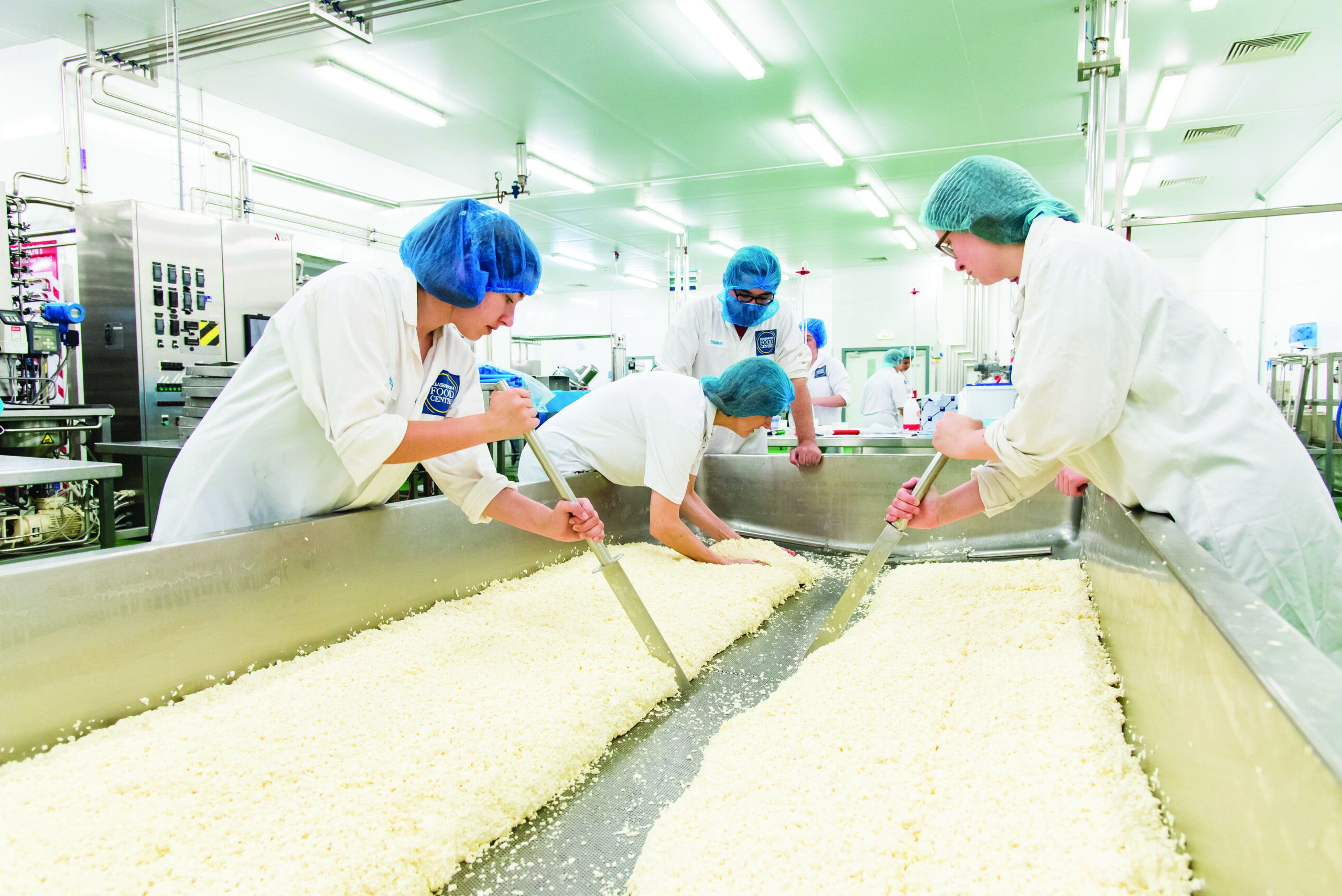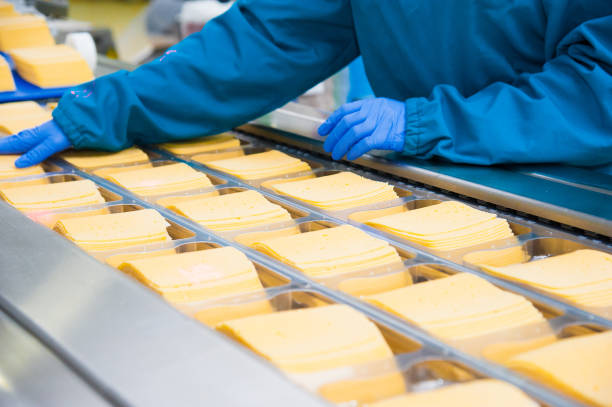Where to Purchase Cheese: Top Cheese Shops Melbourne
Where to Purchase Cheese: Top Cheese Shops Melbourne
Blog Article
Understanding the Science Behind Cheese Manufacturing: From Milk Option to End Product
The complex procedure of cheese manufacturing begins with the careful choice of milk, a choice that profoundly impacts the last product's taste and appearance. Understanding the pivotal duty of microorganisms in fermentation exposes just how these bacteria change lactose into lactic acid, an essential component in creating the cheese's personality. cheese factory melbourne.
Milk Choice Refine
The selection of milk is a crucial action in the cheese production process, as it directly influences the flavor, structure, and quality of the last item. Various aspects have to be taken into consideration during this selection, including the source of the milk, the breed of the pets, and their diet. Cow's milk, goat's milk, and sheep's milk each have distinctive residential properties that add to the unique features of various cheese selections.

Furthermore, the nutritional content of the milk, influenced by the animal's diet, can change the cheese's last attributes. Premium milk, sourced from healthy and balanced animals, ensures a remarkable cheese product, emphasizing the importance of rigid top quality control procedures in the milk option process. Hence, mindful consideration in milk choice is important for successful cheese production.

Function of Microorganisms in Fermentation
Following the careful choice of milk, the fermentation procedure plays a critical role in cheese manufacturing, where germs are introduced to change the milk into cheese. The main feature of these germs is to transform lactose, the sugar present in milk, right into lactic acid. This acidification not only modifies the pH of the milk yet likewise plays a critical duty in taste advancement, appearance, and preservation of the last item.
Lactic acid bacteria (LAB), such as Lactococcus and Streptococcus species, are frequently made use of in cheese production due to their capability to thrive in milk and their contribution to the fermentation procedure. The metabolic activities of these bacteria cause the manufacturing of various metabolites, consisting of taste compounds and antimicrobial compounds, which hinder spoilage organisms and pathogenic germs, therefore boosting cheese safety.
Moreover, the fermentation procedure affects the total attributes of celebrity, including its scent, taste, and texture. Various strains of bacteria can present distinctive tastes and add to the special accounts of different cheese types. Therefore, the selection of microbial societies is an essential step in attaining the preferred cheese high quality and consistency.
Coagulation and Curd Development
In the cheese manufacturing process, coagulation notes a vital shift from fluid milk to solid curds. This transformation is primarily caused by the addition of rennet, an enzyme that acts on casein, the major protein in milk. When rennet is presented, it facilitates the gathering of casein particles, bring about the development of a gel-like framework. This procedure is commonly matched by the acidic atmosphere created by lactic acid microorganisms, which even more help in coagulation by lowering the pH of the milk.
The resulting curds are created as the liquid whey starts to divide. Variables such as temperature, the amount of rennet used, and the moment permitted coagulation are important in figuring out the structure and high quality of the curds. Higher temperatures and longer coagulation times normally produce stronger curds, suitable for more difficult cheeses.
Once curds are developed, they are cut right into smaller pieces, allowing whey to escape much more successfully. This step is critical, as it affects the wetness web content and general attributes of the final cheese product. Correct administration of coagulation and curd development is crucial for attaining particular cheese styles and desired taste profiles.
Aging and Flavor Development
After the curd has actually been created and whey has been drained, the following stage in cheese production is maturing, likewise check this known as maturation. This important process significantly influences celebrity's last taste, texture, and aroma. Throughout aging, numerous biochemical and microbiological improvements occur, affecting the total sensory profile.
The aging atmosphere, including temperature level and moisture, plays an important duty in flavor advancement. Enzymes and bacteria existing in celebrity promote the breakdown of healthy proteins and fats into smaller sized molecules, causing the development of amino acids, fats, and unstable compounds. These improvements add to the complexity of taste and fragrance, with distinct accounts arising based upon the certain cheese variety.
In addition, the period of aging is essential; shorter aging durations commonly yield milder flavors, while longer maturation cause more robust and nuanced accounts. Aspects such as the milk resource, cheese kind, and specific aging methods even more More hints enhance the diversity of tastes created. Eventually, aging is a delicate balance of time, environmental conditions, and microbial activity, finishing in the distinct attributes that specify each cheese selection.
Quality Assurance in Cheese Production
Ensuring high criteria throughout celebrity manufacturing procedure is essential for delivering a top quality item that fulfills customer expectations - cheese shop melbourne. Quality control (QC) includes numerous phases, beginning with raw milk choice to the final aging procedure. Each phase requires careful focus to detail to stop contamination and guarantee consistency
During milk choice, producers have to assess variables such as fat web content, pH levels, and microbial top quality. Normal screening for somatic cell matters and microbial loads is essential to make sure the milk's suitability for cheese making. In the manufacturing stage, QC measures include keeping track of the temperature, level of acidity, and rennet activity, which significantly influence structure and taste.
As cheese grows, continual sensory examinations and laboratory analyses are conducted to assess flavor advancement, texture, and general top quality. Any type of inconsistencies from developed standards require rehabilitative activities to keep product honesty.
In addition, documentation and traceability are crucial components of efficient high quality control, allowing manufacturers to track celebrity from ranch to consumer. By applying robust QC protocols, cheese suppliers can not just enhance product quality however likewise build consumer trust, guaranteeing their area in an affordable market.

Final Thought
In verdict, the science of cheese manufacturing encompasses a number of essential stages, each considerably affecting the final item. The why not try these out mindful option of milk, the essential role of bacteria in fermentation, the improvement of liquid milk right into curds through coagulation, and the aging procedure collectively add to the growth of special tastes and appearances. In addition, strict quality assurance determines ensure that each cheese variety fulfills established requirements, thus boosting customer satisfaction and preserving the stability of the cheese-making practice.
Report this page